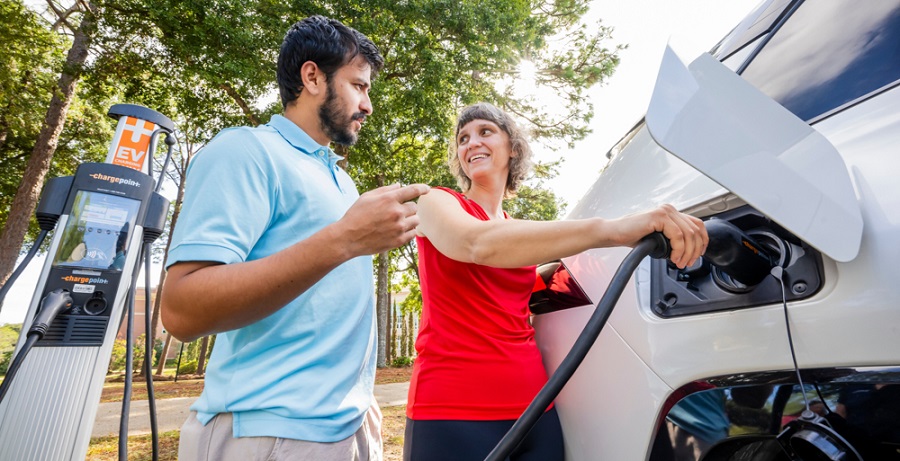Introducing ‘V2G’: South Research Focused on Vehicle-to-Grid Power Sharing
Posted on November 7, 2023

Dr. Daniela Touma, assistant professor of electrical and computer engineering at the University of South Alabama, is using a National Science Foundation grant to predict power demands in the development of vehicle-to-grid technology.
V2G, as it’s known, allows plug-in hybrid and electric vehicles to push power back to the electrical grid, assisting the grid during peak hours. This flexibility addresses the fear that the increasing number of electric vehicles could strain the electrical grid in states such as Texas, which has been put under pressure by winter storms and summer heat.
Touma will use artificial intelligence algorithms in a laboratory simulation to forecast usage patterns by electric vehicles.
“A lot of people are concerned that with so many vehicles on the grid, we might not be able to power everything,” she said. “When we talk about V2G, it’s a way for electric vehicles to help the grid. In times when you’re not using your vehicle, your battery could help power appliances in your house. And then, it can be recharged before the time to use your vehicle, so it’s full when you need it.”
“We’ve got all these vehicles connected to charging stations all night at home, or all day at work, so why not put this power to use? An electric vehicle has a big battery, so it’s a big advantage.”
In June, Touma’s $199,000 NSF award was announced. She and graduate assistants are working on the laboratory simulation and surveying Mobile area residents and utility companies about their policies, practices and attitudes toward electric vehicles and vehicle-to-grid capabilities.
She is collaborating on data collection with Marianne Loes, an instructor in marketing and quantitative methods in the Mitchell College of Business.
The research is focused on the Gulf Coast, a region of the country that has hardly begun to explore alternatives to internal combustion vehicles. In 2022, according to the U.S. Department of Energy, there were 8,700 electric cars registered in the state of Alabama, along with 4,400 plug-in hybrid vehicles — or, about 0.3 percent of light-duty vehicles on the road.
Touma’s questions for Mobile consumers include, “What is your commuting distance?” “What time do you arrive at and leave work?” “What actions do you take to reduce your electric power billing?”
Questions for utility companies include, “What are your incentives for motivating your customers to move their energy consumption to periods outside peak hours?” “How do you manage extra power demand during peak hours?”
“A lot of people still think the grid is not prepared for electric vehicles,” Touma said. “That’s why we need these studies, looking at how EVs can help the grid.”
Touma still remembers, several years ago, when she first read an article about V2G in a technical journal.
“When I saw that, I thought, ‘This is an area for research,’” she said. “It helps both sides. It helps the grid function and it helps customers save money. That’s important. We’re engineers trying to solve problems, so we need programs people want to use.”





